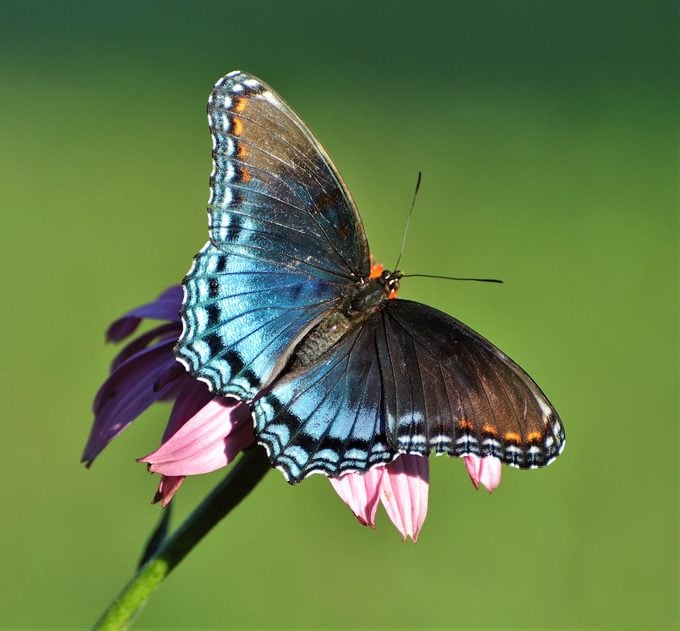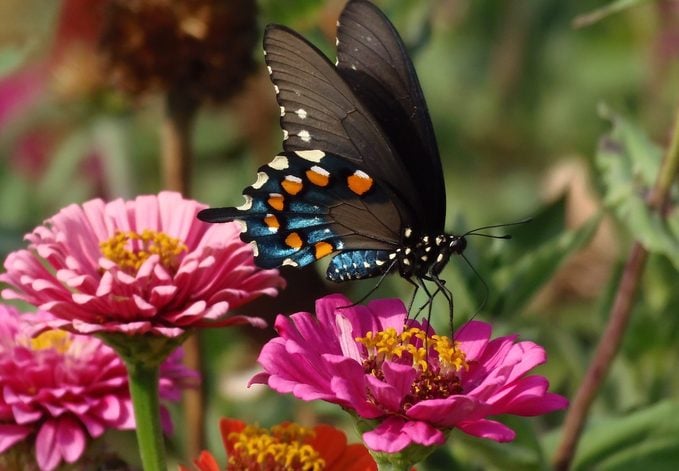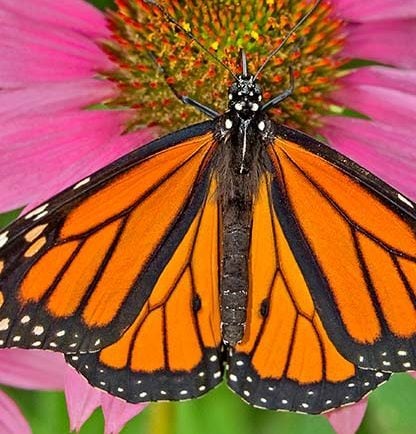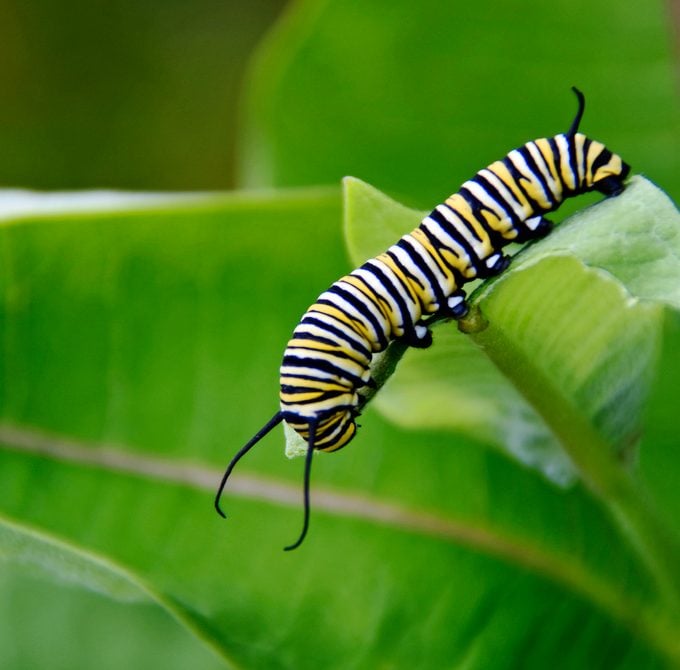Butterfly Identification: A Helpful Cheat Sheet
Updated: Jul. 12, 2021
Love attracting butterflies to your backyard? Take notice of these flying pollinators and learn helpful butterfly identification tips.
Our editors and experts handpick every product we feature. We may earn a commission from your purchases.
Watching butterflies flitting about in the backyard never gets old. Yet with hundreds of species out there, it can be hard to identify butterflies. Experts know a few tricks, though. Think of this as your butterfly identification cheat sheet.
Butterfly Identification: Color, Size, Shape
Butterflies come in a variety of colors, sizes and shapes, so make a mental note of these characteristics when you spot a species you don’t know. Even better, take a photo so you can look it up later on.

Some butterflies have wing shapes or marks that you’ll start to recognize by family. The skippers, for instance, have small wings, while the longwings have narrow wings, and the commas and question marks have “punctuation” on their wings. It’s relatively easy to spot the distinctive monarchs, swallowtails and admirals, but see if you can identify the sexes by their slightly different markings, or the variations based on region.
Check out 3 butterflies that look like monarchs.

Butterfly Identification: Location and Habitat
A species’ region and habitat are also important butterfly identification tools. Few species are found across the entire continent; some have very limited ranges.
Type of habitat matters, too. It’s easy to confuse a pipevine swallowtail with a similarly colored red-spotted purple butterfly—unless you know that the former prefers sunny fields and open woodlands and feeds on flower nectar, while the red-spotted purple lives deeper in the forest and feeds on fallen fruits, sap and even dung and carrion.

Is It Really a Butterfly?
Here’s another question to ask: Is your “butterfly” really a moth? Many moths are drably colored, but that isn’t a foolproof ID because some are just as colorful as butterflies. The boldly spotted leopard moth is often mistaken for a butterfly. The sea-foam green of a luna moth and the yellow and pink of an io moth can also be confused with butterfly wings.
Here are some more reliable differences. Generally, butterflies are active during the day, while the majority of moths are nocturnal (with some striking exceptions). Moth antennae are either feathery or threadlike, while butterfly antennae are smooth and end in a small knob. Finally, butterflies fold up their wings over their bodies while resting. Moths, on the other hand, usually fold their wings down alongside their bodies.
Learn more about garden moths.

Caterpillars and Host Plants
It’s important to remember that all butterflies start out life as caterpillars. Like the winged adults, caterpillars vary widely in appearance from species to species. Identifying the caterpillars in your garden will tell you which butterflies you can expect to see. Pay attention to which plant your caterpillar is eating. Each species can feed only upon a limited number of plants, so knowing the host plant is a big clue.
Check out the ultimate guide to growing milkweed for monarch butterflies.
